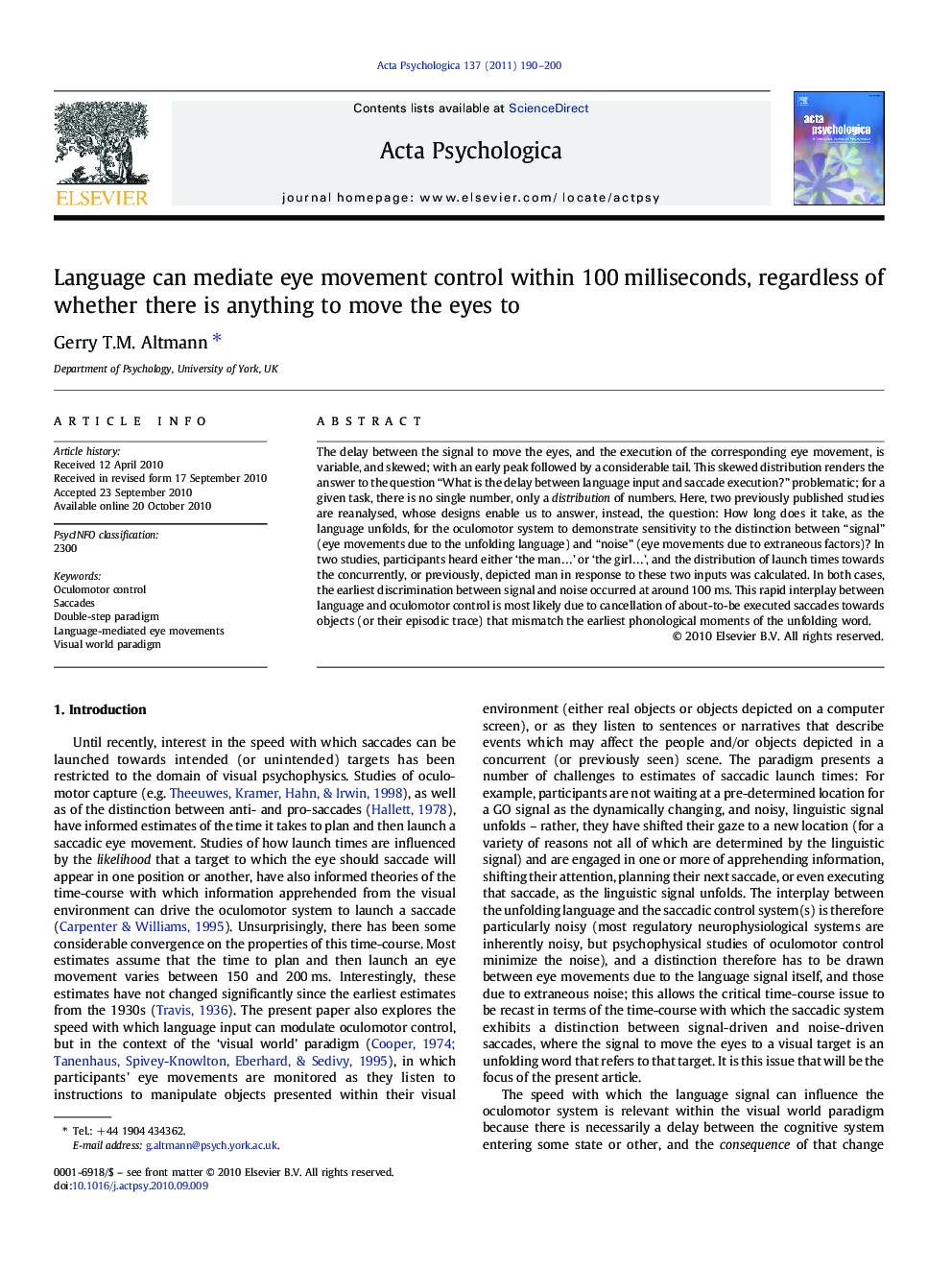| Article ID | Journal | Published Year | Pages | File Type |
|---|---|---|---|---|
| 10453858 | Acta Psychologica | 2011 | 11 Pages |
Abstract
The delay between the signal to move the eyes, and the execution of the corresponding eye movement, is variable, and skewed; with an early peak followed by a considerable tail. This skewed distribution renders the answer to the question “What is the delay between language input and saccade execution?” problematic; for a given task, there is no single number, only a distribution of numbers. Here, two previously published studies are reanalysed, whose designs enable us to answer, instead, the question: How long does it take, as the language unfolds, for the oculomotor system to demonstrate sensitivity to the distinction between “signal” (eye movements due to the unfolding language) and “noise” (eye movements due to extraneous factors)? In two studies, participants heard either 'the manâ¦' or 'the girlâ¦', and the distribution of launch times towards the concurrently, or previously, depicted man in response to these two inputs was calculated. In both cases, the earliest discrimination between signal and noise occurred at around 100 ms. This rapid interplay between language and oculomotor control is most likely due to cancellation of about-to-be executed saccades towards objects (or their episodic trace) that mismatch the earliest phonological moments of the unfolding word.
Related Topics
Life Sciences
Neuroscience
Cognitive Neuroscience
Authors
Gerry T.M. Altmann,
